Abstract
The present study used a self-management treatment package to teach 3 children with autism, who exhibited inappropriate play behaviors, to play appropriately in the absence of a treatment provider. After self-management training, generalization and maintenance of the behavior change were assessed. Because of the detrimental effects of self-stimulation (arm flapping, spinning toys, twirling, etc.) on learning, the relationship between self-stimulatory behaviors and appropriate play was measured. Results indicated that the children learned to exhibit appropriate play skills in unsupervised settings, appropriate play skills generalized to new settings, and 2 of the children maintained their gains at 1-month follow-up. In addition, self-stimulatory behaviors decreased as appropriate play increased. Treatment implications of these findings are discussed.
Full text
PDF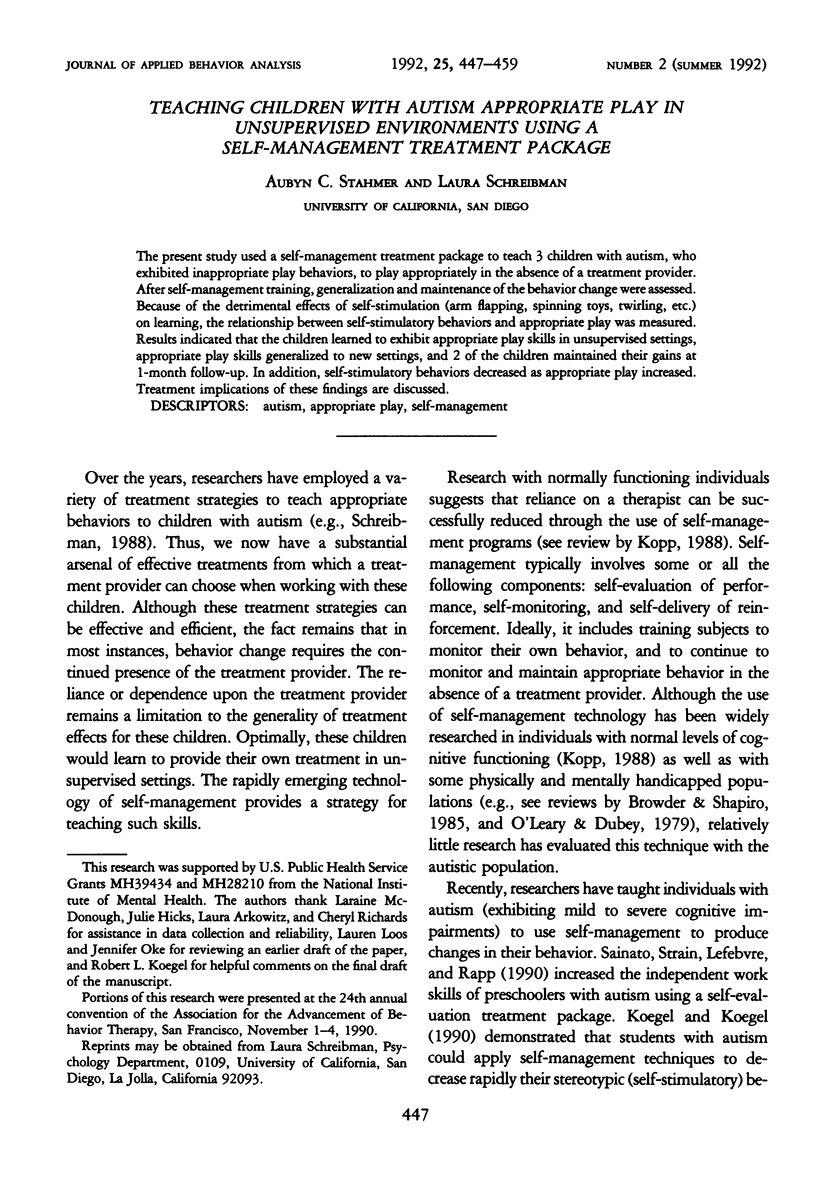
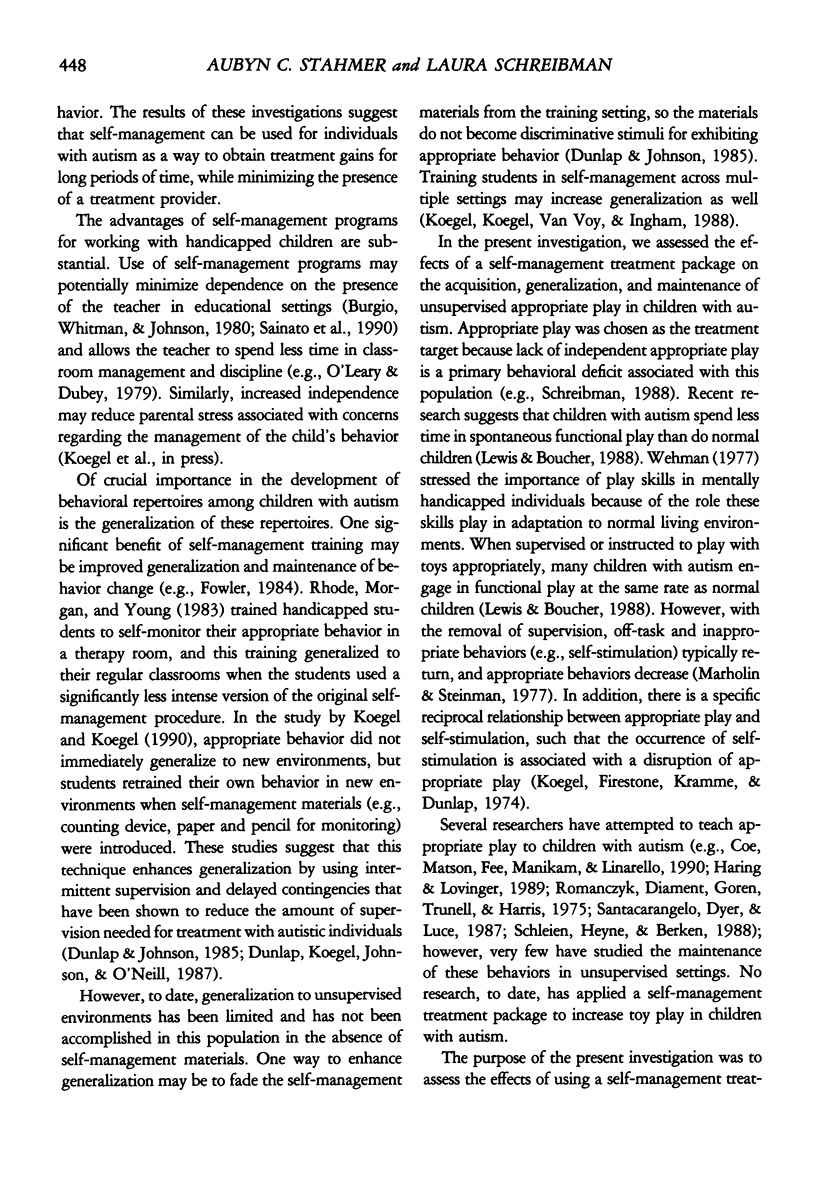
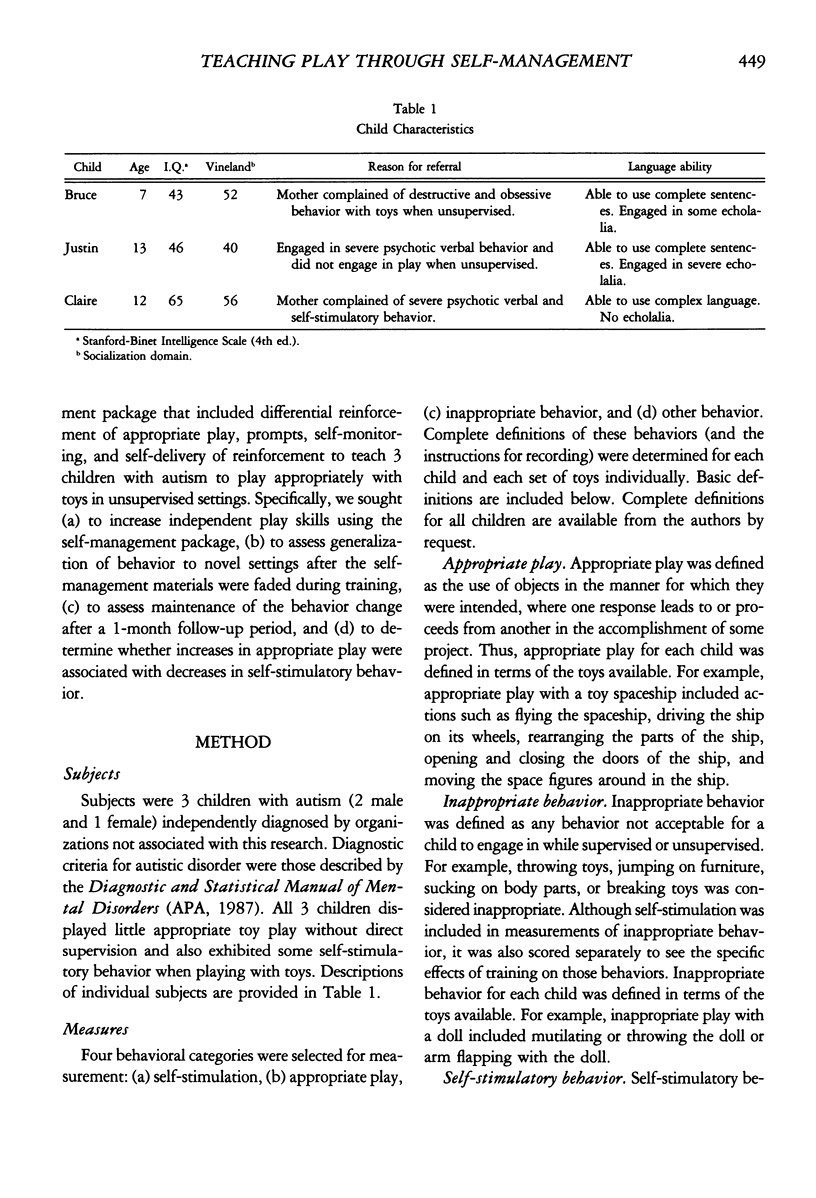
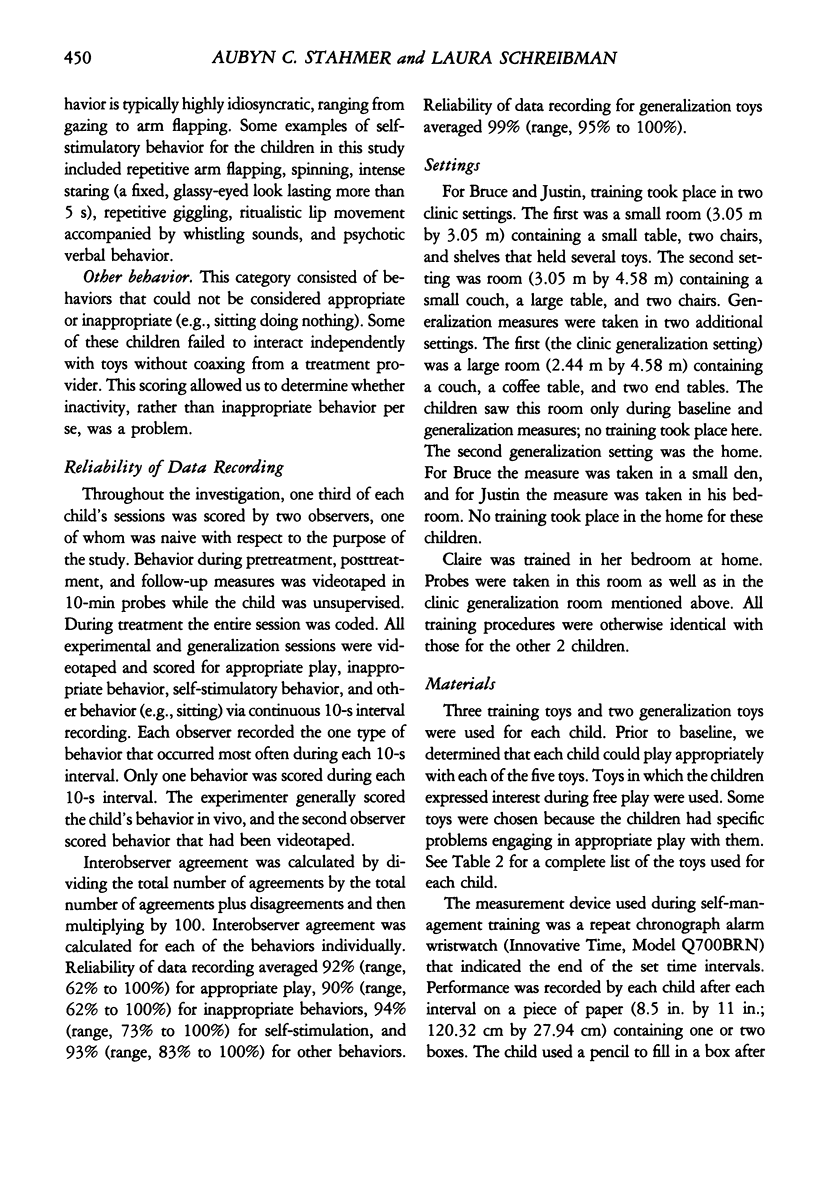
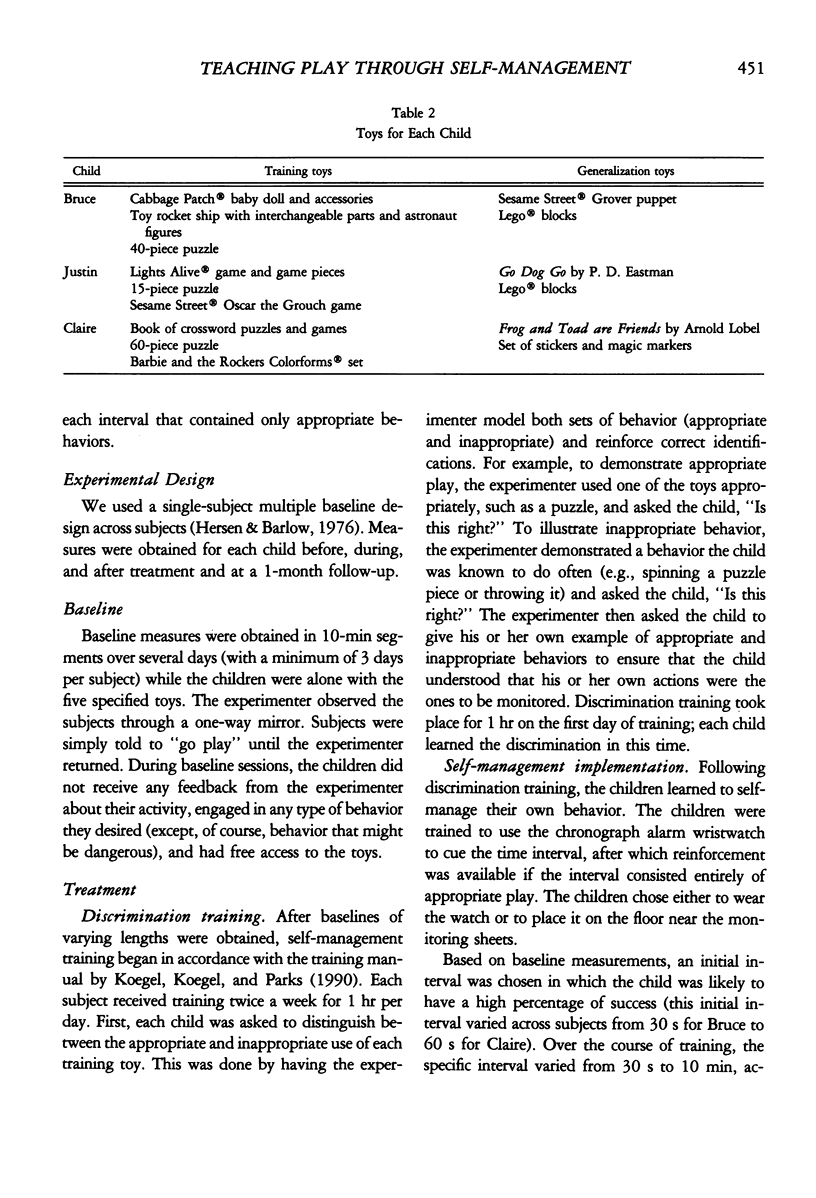
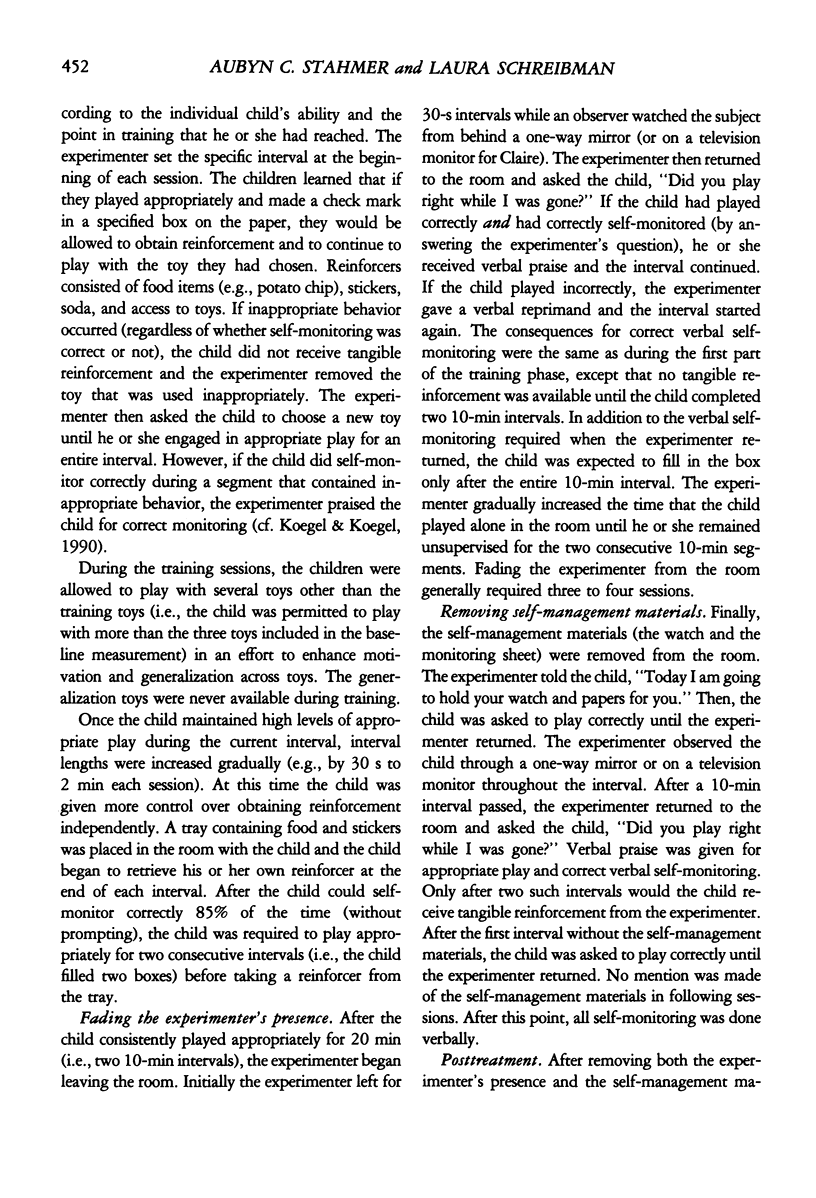
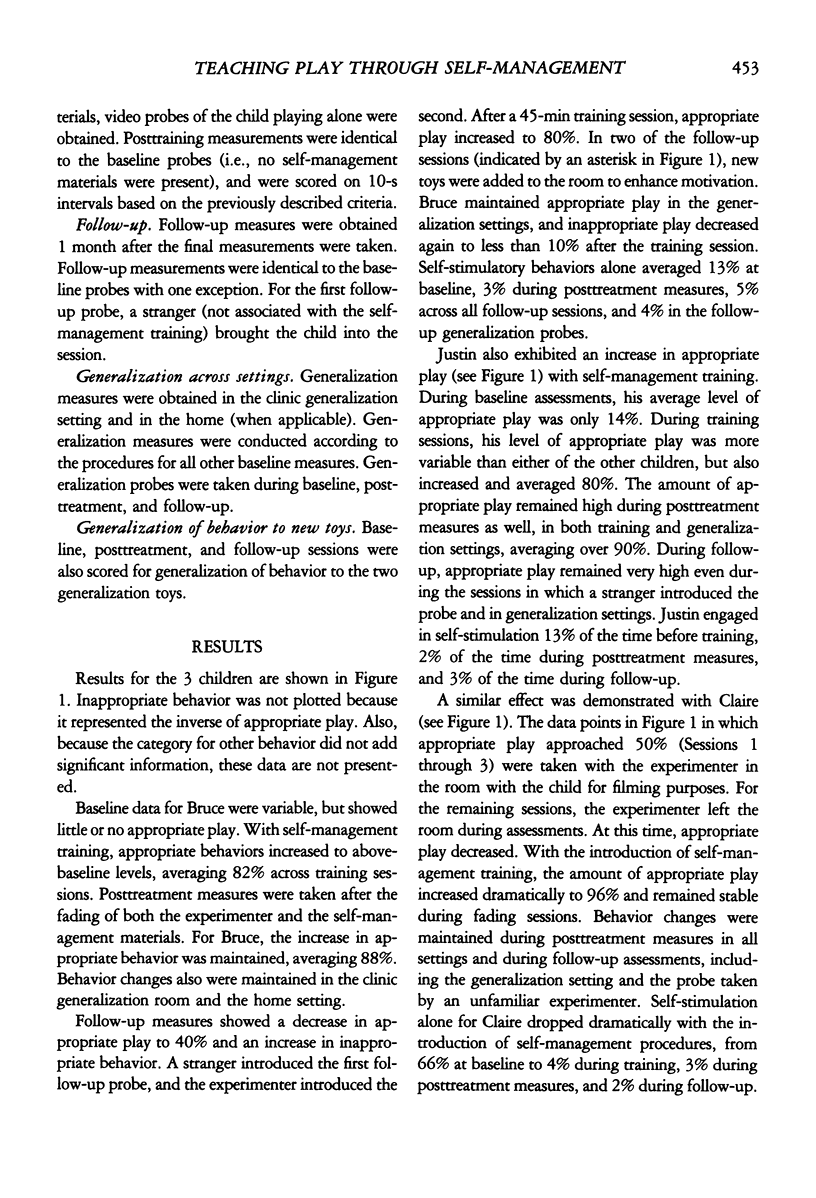
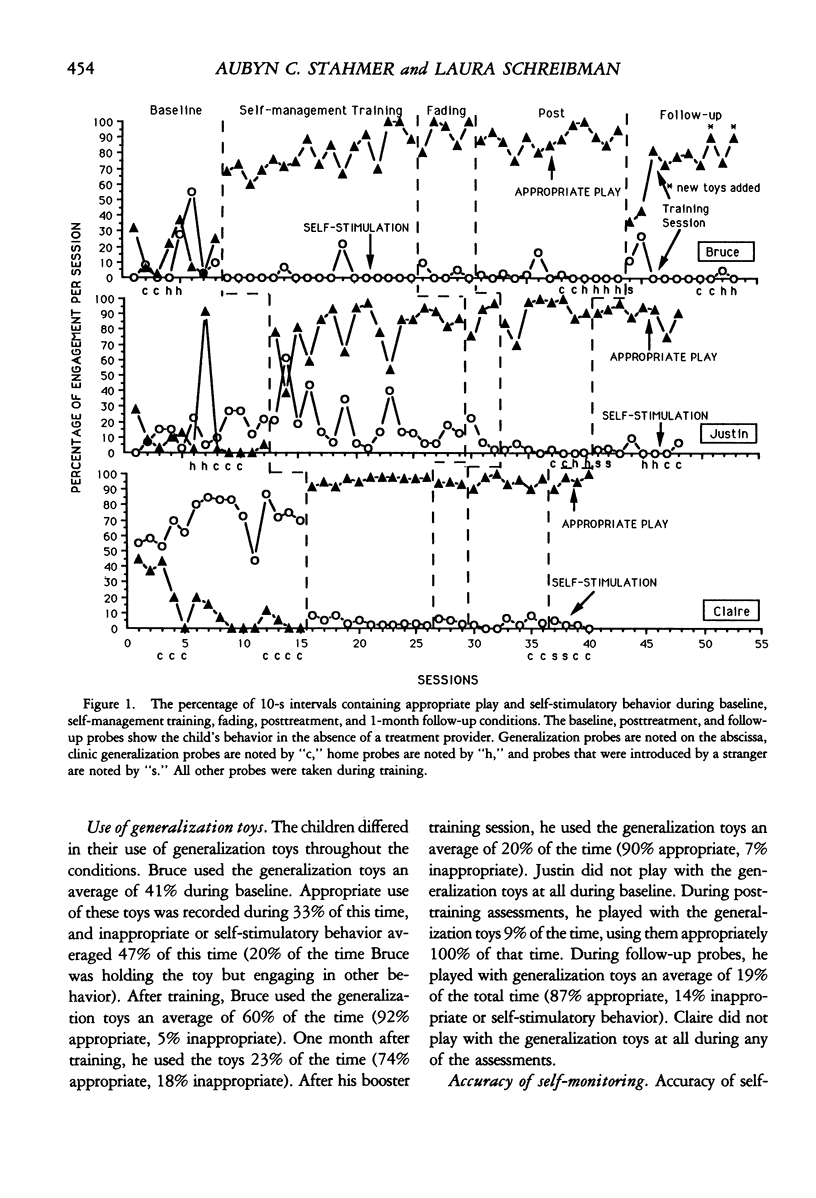
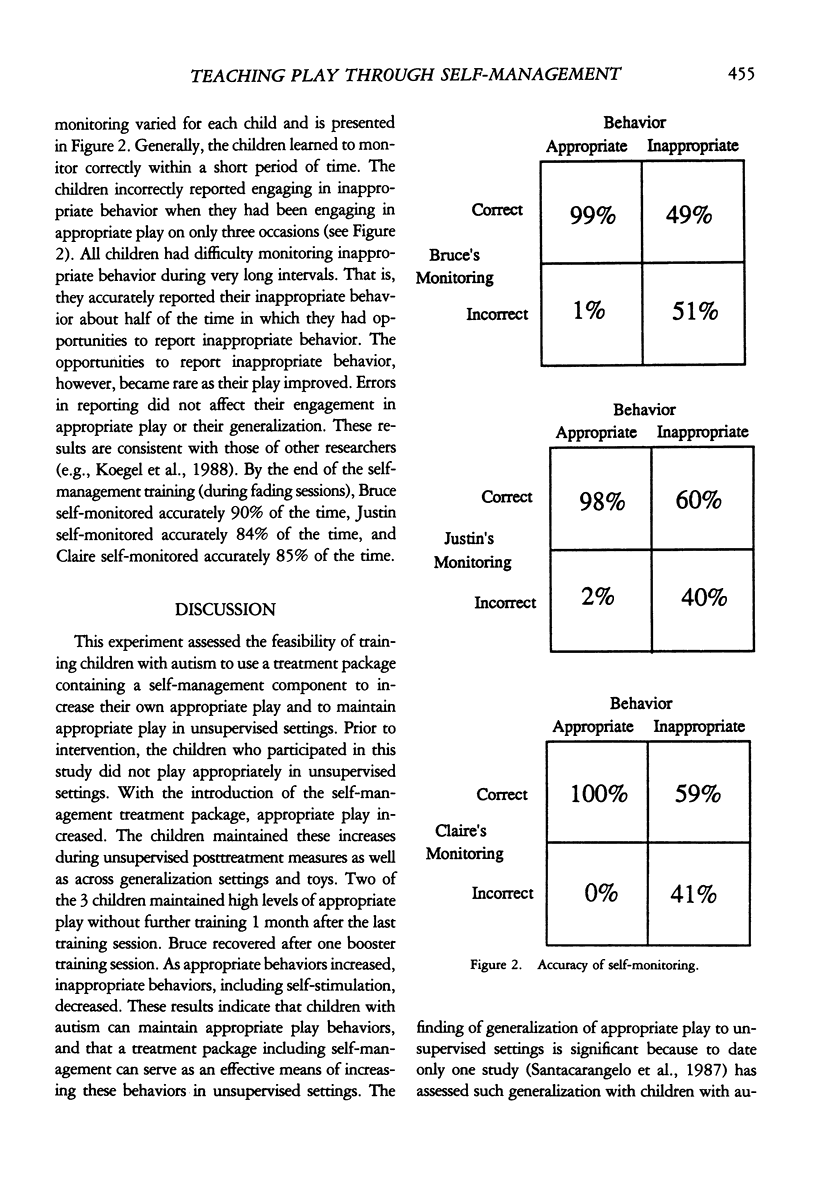
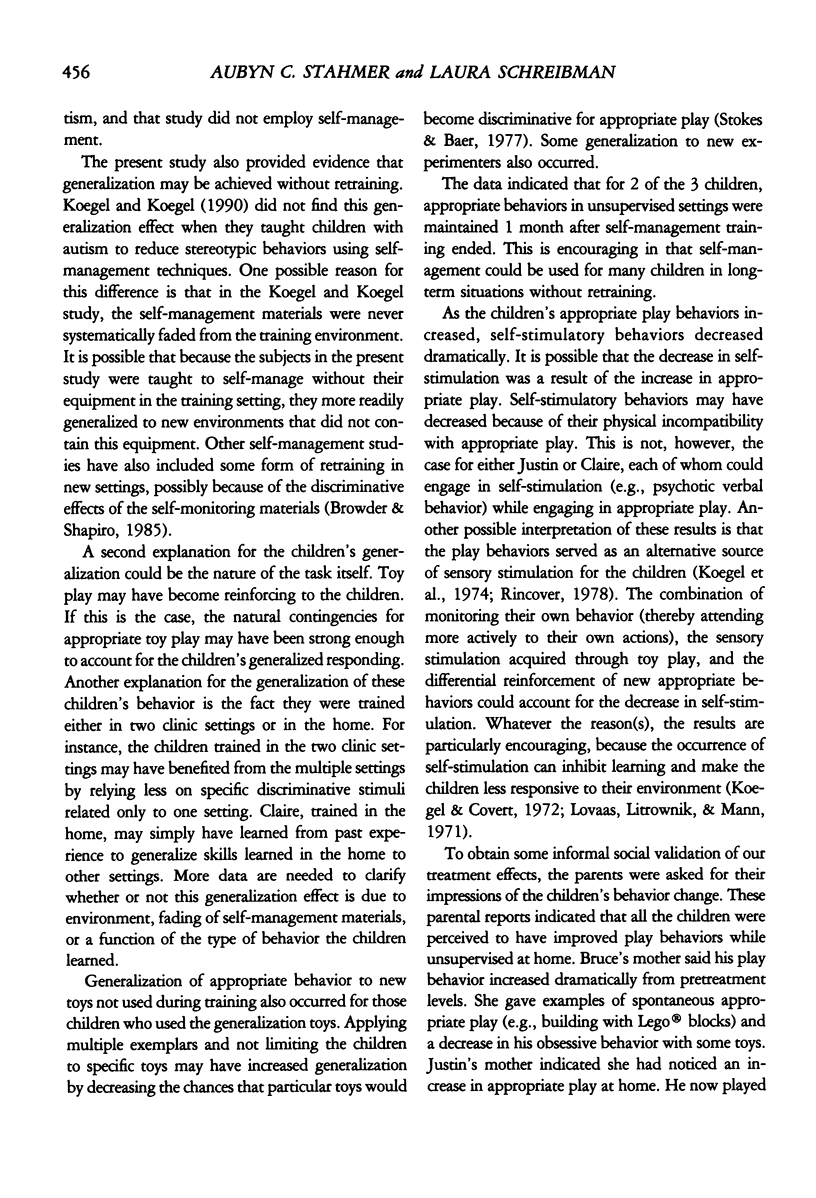
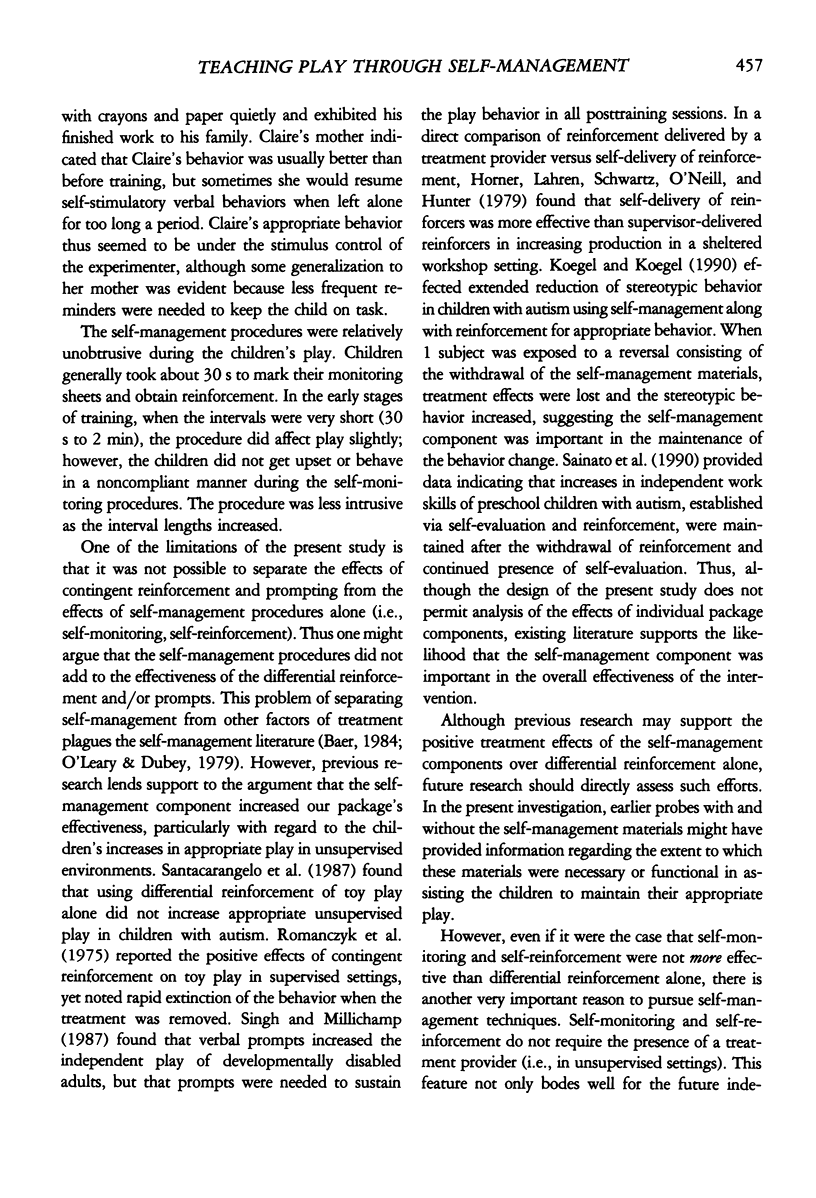
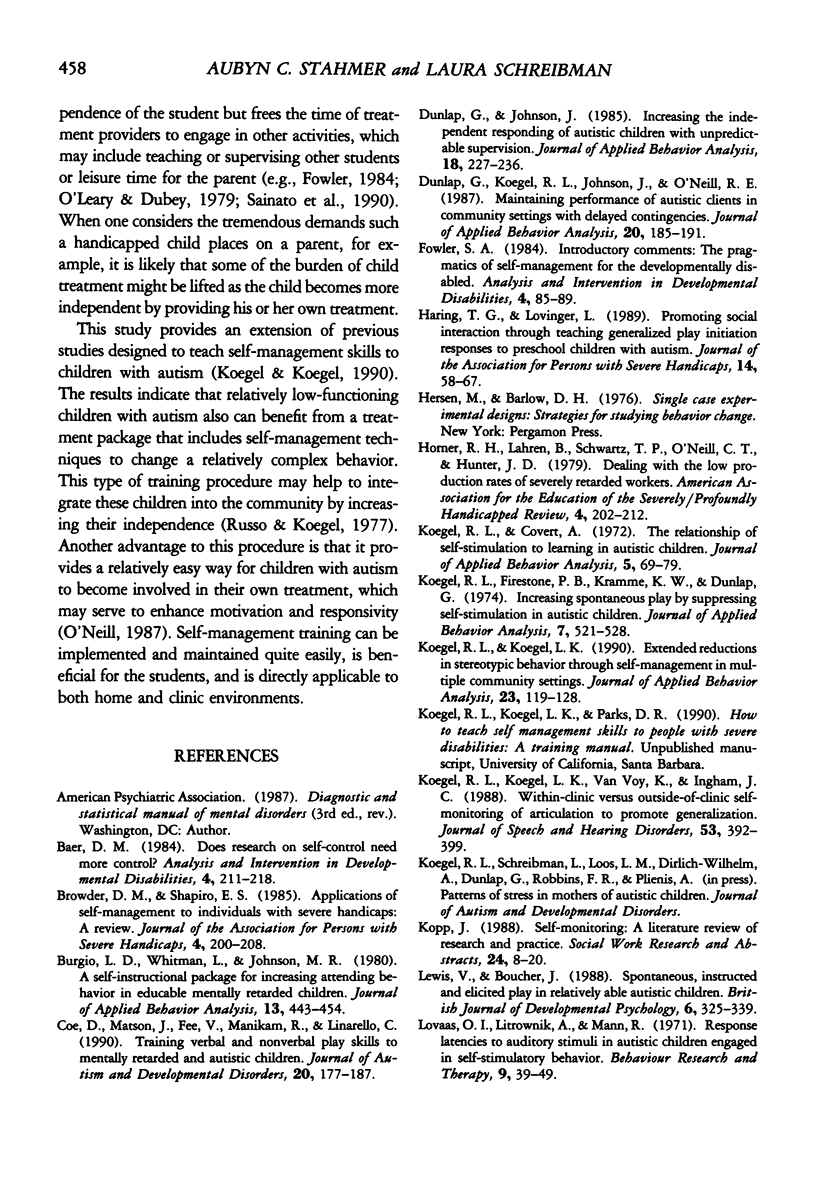
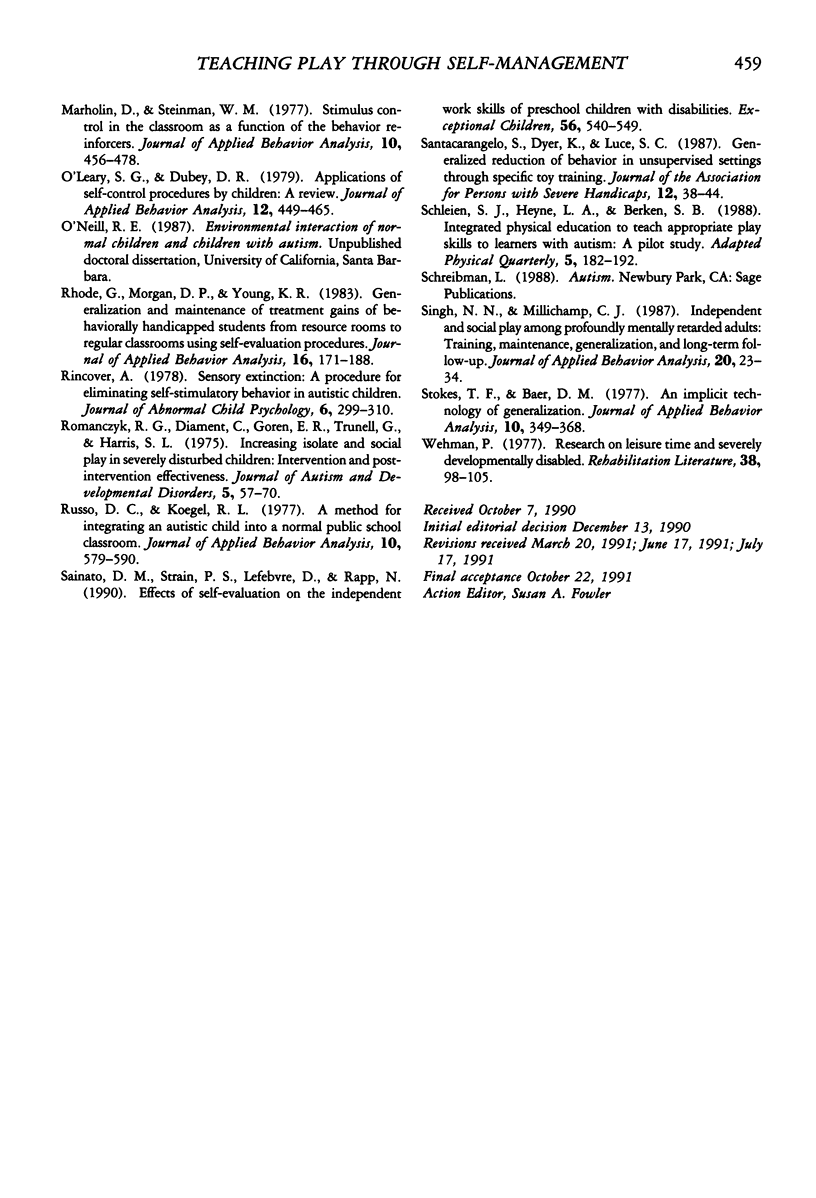
Selected References
These references are in PubMed. This may not be the complete list of references from this article.
- Burgio L. D., Whitman T. L., Johnson M. R. A self-instructional package for increasing attending behavior in educable mentally retarded children. J Appl Behav Anal. 1980 Fall;13(3):443–459. doi: 10.1901/jaba.1980.13-443. [DOI] [PMC free article] [PubMed] [Google Scholar]
- Coe D., Matson J., Fee V., Manikam R., Linarello C. Training nonverbal and verbal play skills to mentally retarded and autistic children. J Autism Dev Disord. 1990 Jun;20(2):177–187. doi: 10.1007/BF02284717. [DOI] [PubMed] [Google Scholar]
- Dunlap G., Johnson J. Increasing the independent responding of autistic children with unpredictable supervision. J Appl Behav Anal. 1985 Fall;18(3):227–236. doi: 10.1901/jaba.1985.18-227. [DOI] [PMC free article] [PubMed] [Google Scholar]
- Dunlap G., Koegel R. L., Johnson J., O'Neill R. E. Maintaining performance of autistic clients in community settings with delayed contingencies. J Appl Behav Anal. 1987 Summer;20(2):185–191. doi: 10.1901/jaba.1987.20-185. [DOI] [PMC free article] [PubMed] [Google Scholar]
- Koegel R. L., Firestone P. B., Kramme K. W., Dunlap G. Increasing spontaneous play by suppressing self-stimulation in autistic children. J Appl Behav Anal. 1974 Winter;7(4):521–528. doi: 10.1901/jaba.1974.7-521. [DOI] [PMC free article] [PubMed] [Google Scholar]
- Koegel R. L., Koegel L. K. Extended reductions in stereotypic behavior of students with autism through a self-management treatment package. J Appl Behav Anal. 1990 Spring;23(1):119–127. doi: 10.1901/jaba.1990.23-119. [DOI] [PMC free article] [PubMed] [Google Scholar]
- Koegel R. L., Koegel L. K., Van Voy K., Ingham J. C. Within-clinic versus outside-of-clinic self-monitoring of articulation to promote generalization. J Speech Hear Disord. 1988 Nov;53(4):392–399. doi: 10.1044/jshd.5304.392. [DOI] [PubMed] [Google Scholar]
- Lovaas O. I., Litrownik A., Mann R. Response latencies to auditory stimuli in autistic children engaged in self-stimulatory behavior. Behav Res Ther. 1971 Feb;9(1):39–49. doi: 10.1016/0005-7967(71)90035-0. [DOI] [PubMed] [Google Scholar]
- Marholin D., 2nd, Steinman W. M. Stimulus control in the classroom as a function of the behavior reinforced. J Appl Behav Anal. 1977 Fall;10(3):465–478. doi: 10.1901/jaba.1977.10-465. [DOI] [PMC free article] [PubMed] [Google Scholar]
- O'Leary S. G., Dubey D. R. Applications of self-control procedures by children: a review. J Appl Behav Anal. 1979 Fall;12(3):449–465. doi: 10.1901/jaba.1979.12-449. [DOI] [PMC free article] [PubMed] [Google Scholar]
- Rhode G., Morgan D. P., Young K. R. Generalization and maintenance of treatment gains of behaviorally handicapped students from resource rooms to regular classrooms using self-evaluation procedures. J Appl Behav Anal. 1983 Summer;16(2):171–188. doi: 10.1901/jaba.1983.16-171. [DOI] [PMC free article] [PubMed] [Google Scholar]
- Rincover A. Sensory extinction: a procedure form eliminating self-stimulatory behavior in developmentally disabled children. J Abnorm Child Psychol. 1978 Sep;6(3):299–310. doi: 10.1007/BF00924733. [DOI] [PubMed] [Google Scholar]
- Romanczyk R. G., Diament C., Goren E. R., Trunell G., Harris S. L. Increasing isolate and social play in severely disturbed children: intervention and postintervention effectiveness. J Autism Child Schizophr. 1975 Mar;5(1):57–70. doi: 10.1007/BF01537972. [DOI] [PubMed] [Google Scholar]
- Russo D. C., Koegel R. L. A method for integrating an autistic child into a normal public-school classroom. J Appl Behav Anal. 1977 Winter;10(4):579–590. doi: 10.1901/jaba.1977.10-579. [DOI] [PMC free article] [PubMed] [Google Scholar]
- Sainato D. M., Strain P. S., Lefebvre D., Rapp N. Effects of self-evaluation on the independent work skills of preschool children with disabilities. Except Child. 1990 Apr;56(6):540–549. doi: 10.1177/001440299005600605. [DOI] [PubMed] [Google Scholar]
- Singh N. N., Millichamp C. J. Independent and social play among profoundly mentally retarded adults: training, maintenance, generalization, and long-term follow-up. J Appl Behav Anal. 1987 Spring;20(1):23–34. doi: 10.1901/jaba.1987.20-23. [DOI] [PMC free article] [PubMed] [Google Scholar]
- Stokes T. F., Baer D. M. An implicit technology of generalization. J Appl Behav Anal. 1977 Summer;10(2):349–367. doi: 10.1901/jaba.1977.10-349. [DOI] [PMC free article] [PubMed] [Google Scholar]
- Wehman P. Research on leisure time and the severely developmentally disabled. Rehabil Lit. 1977 Apr;38(4):98–105. [PubMed] [Google Scholar]


